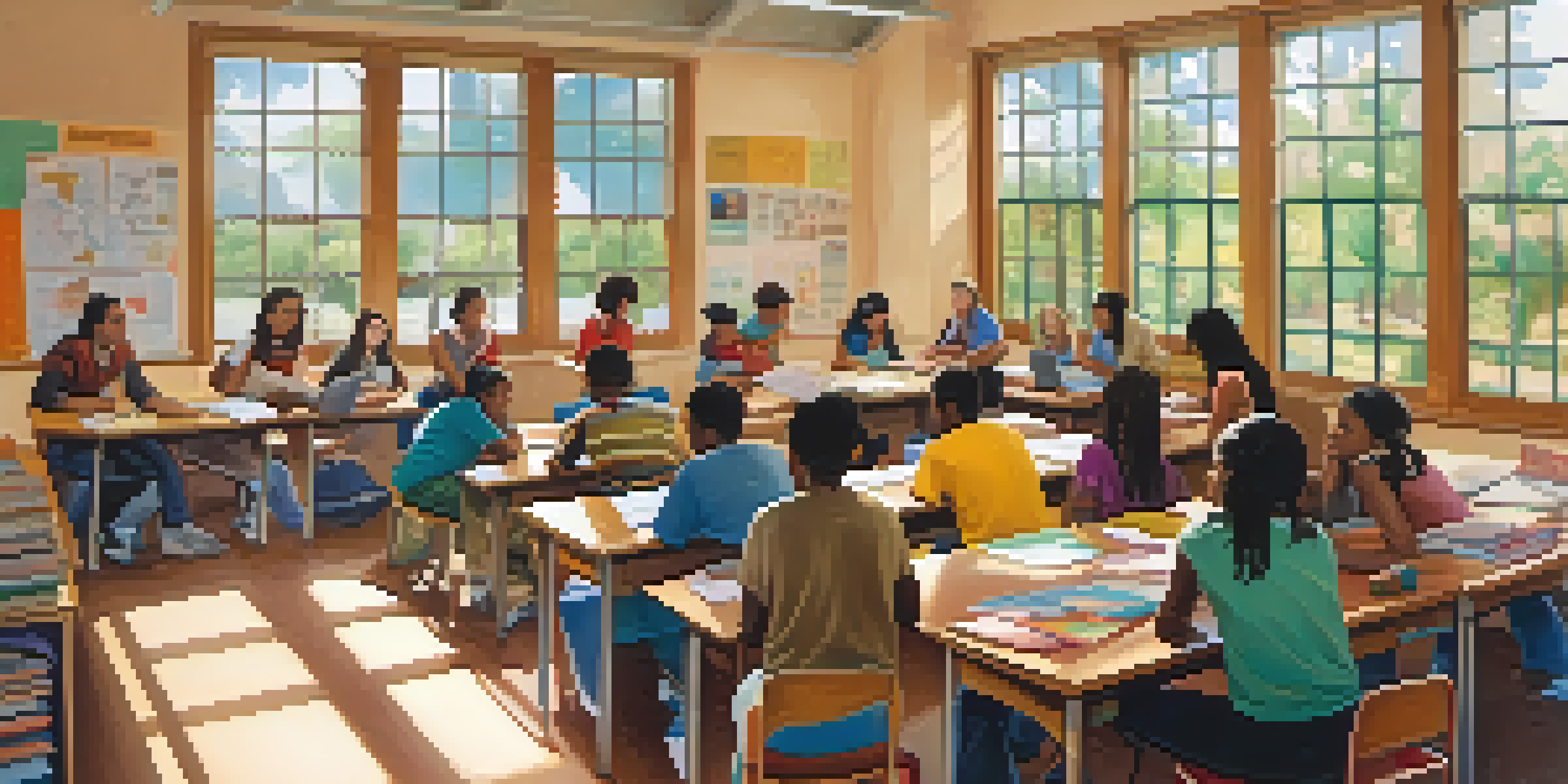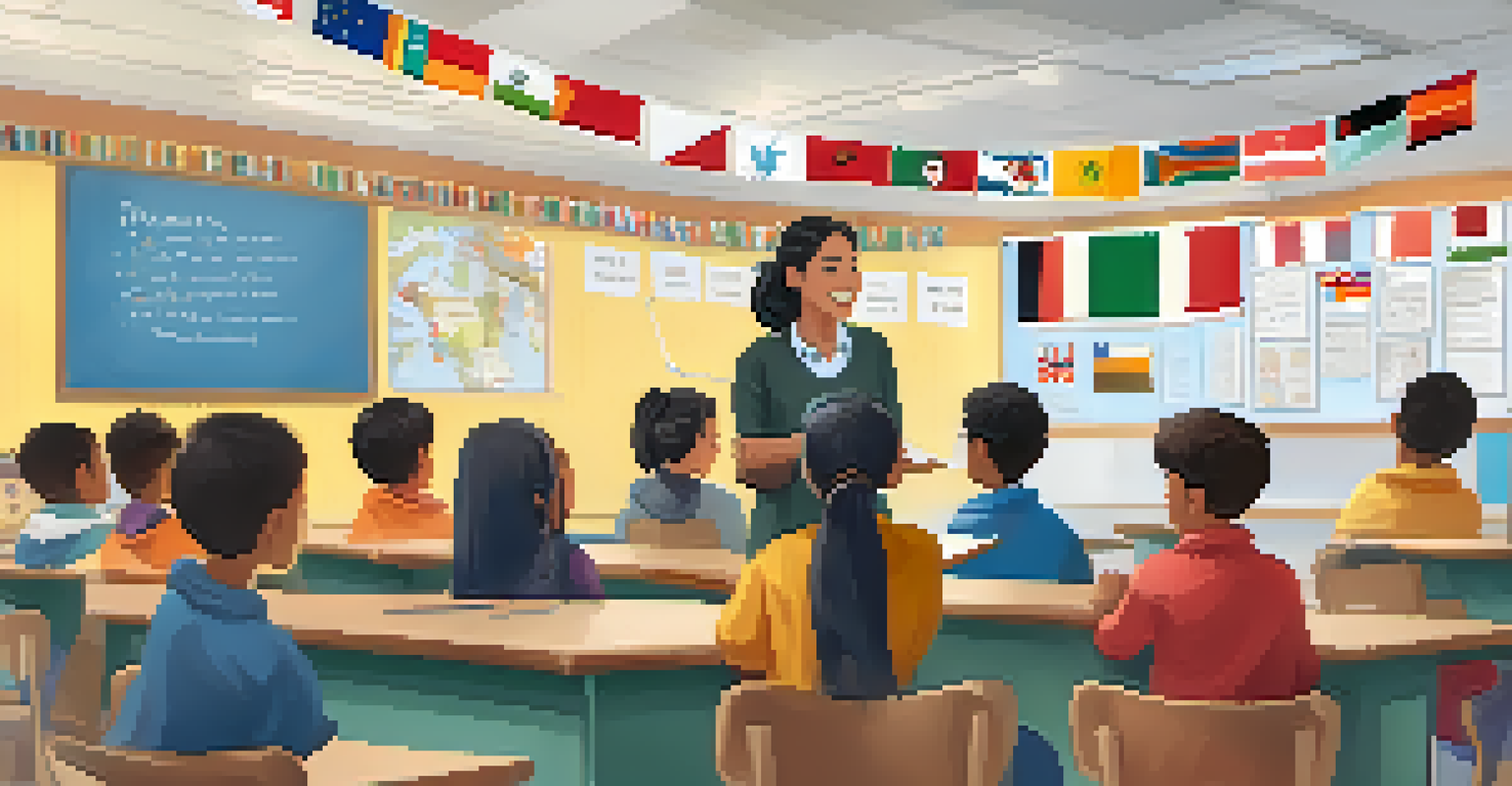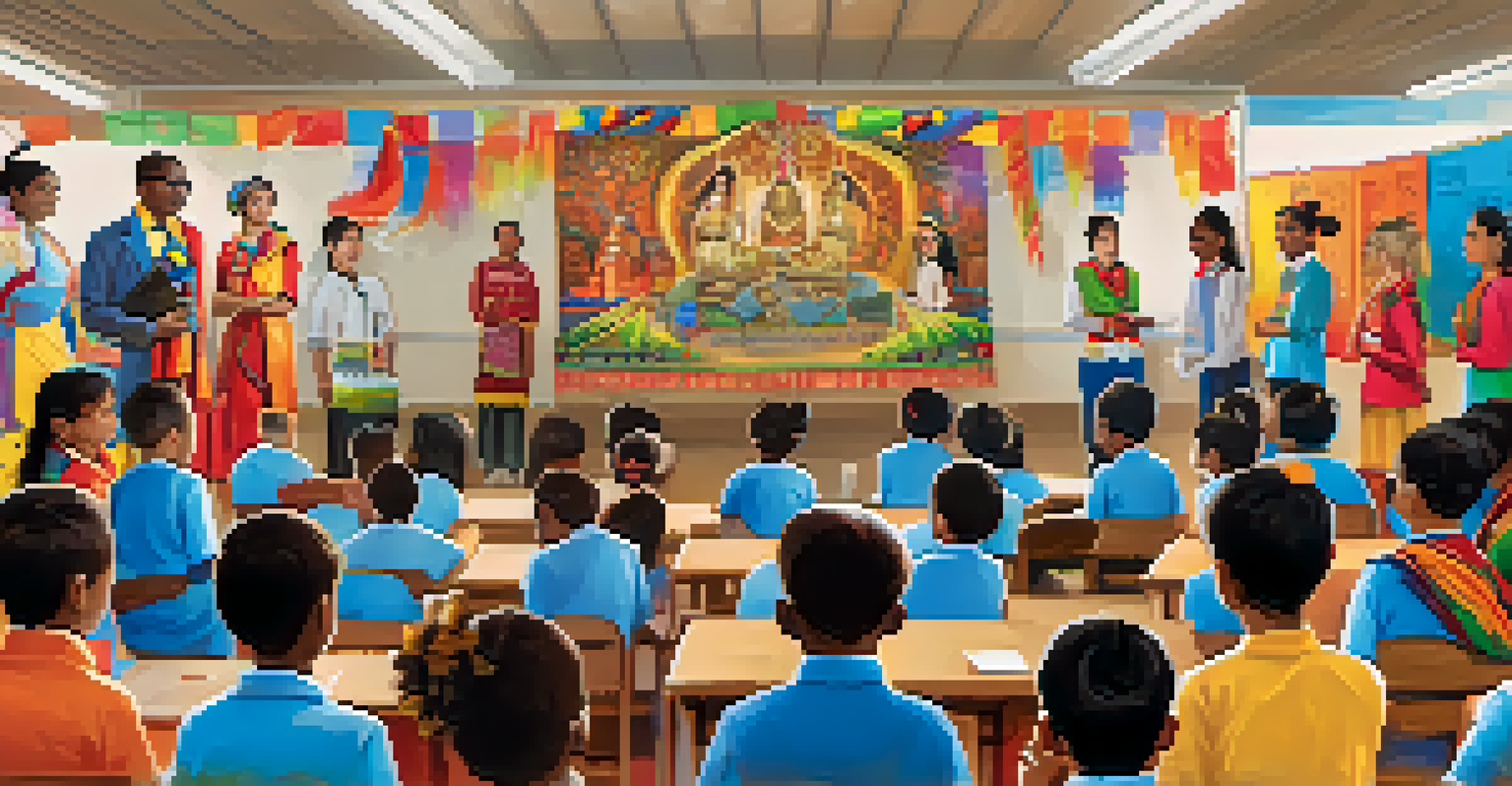The Significance of Language in Culturally Responsive Teaching

Language as a Bridge in Culturally Diverse Classrooms
Language plays a critical role in connecting students from various cultural backgrounds. It serves as a bridge that fosters communication and understanding among students and teachers. By embracing the languages spoken by students, educators can create a more inclusive environment that acknowledges and values diversity.
Language is the roadmap of a culture. It tells you where its people come from and where they are going.
When students feel that their language and culture are recognized, they are more likely to engage in the learning process. This engagement leads to increased motivation and academic success, as students feel seen and heard in their educational journey. In this way, language becomes a powerful tool for building relationships and trust in the classroom.
Moreover, incorporating students' languages allows teachers to tap into their cultural heritage, enriching the curriculum. For example, storytelling traditions from different cultures can enhance lessons, making them more relatable and meaningful. This approach not only aids comprehension but also celebrates diversity.
The Role of Language in Shaping Identity and Confidence
Language is deeply tied to identity, and for many students, their native language is a core part of who they are. When educators recognize and respect students' languages, it fosters a sense of pride and belonging. This affirmation can be particularly empowering for multilingual students, enhancing their confidence in both their language skills and their cultural identity.

For instance, when a teacher encourages a student to share a project in their native language, it validates their linguistic abilities and showcases their unique perspective. This practice not only bolsters the student's confidence but also enriches the learning experience for their peers, who gain insights into different cultures and viewpoints.
Language Builds Classroom Connections
Embracing students' languages fosters communication, inclusivity, and engagement in diverse classrooms.
Additionally, when students see their language skills valued in the classroom, it motivates them to take risks in learning and using the language. This positive reinforcement is crucial for developing fluency and encourages students to embrace their bilingualism as an asset rather than a barrier.
Effective Communication: Key to Culturally Responsive Teaching
Effective communication is essential in culturally responsive teaching. It goes beyond just speaking the same language; it involves understanding the nuances and contexts that shape how students communicate. By being mindful of these differences, educators can better address the needs of their students and facilitate meaningful interactions.
The limits of my language mean the limits of my world.
For example, some cultures may emphasize indirect communication, while others value directness. A culturally responsive teacher recognizes these differences and adapts their communication style accordingly. This adaptability helps prevent misunderstandings and fosters a more collaborative learning environment.
Moreover, encouraging open dialogue about language and communication styles can empower students to express themselves more freely. When students feel safe to share their thoughts and feelings, it cultivates a classroom atmosphere rich in respect and understanding, which is vital for effective learning.
Integrating Multilingual Resources in the Curriculum
Integrating multilingual resources into the curriculum is a powerful strategy for culturally responsive teaching. These resources, such as bilingual books, online tools, and multimedia content, can enhance students' learning experiences and promote language development. By providing materials in various languages, educators demonstrate respect for students' linguistic backgrounds.
For instance, a teacher might include literature from different cultures that is available in both English and the students' native languages. This not only aids comprehension but also encourages students to explore their heritage. It shows that their culture and language have a place in the classroom, fostering inclusivity.
Language Shapes Identity and Confidence
Recognizing and valuing students' native languages enhances their sense of pride and belonging.
Additionally, using multilingual resources can enhance peer interaction and collaboration. Students can work together to understand content, share insights from their cultural perspectives, and help each other with language skills, creating a supportive learning community.
Promoting Bilingualism: An Asset for All Students
Promoting bilingualism in the classroom is not just beneficial for multilingual students; it enhances the learning experience for all. Research shows that bilingualism can improve cognitive skills, creativity, and problem-solving abilities. By encouraging all students to learn a second language, educators can foster a more inclusive and dynamic classroom environment.
For example, implementing dual language programs where students learn academic content in both their native language and a second language can be highly effective. This approach not only supports language development but also enhances cultural awareness and appreciation among all students.
Furthermore, celebrating multilingualism in the classroom encourages students to learn from each other's languages and cultures. This collaborative learning experience builds empathy and respect, essential qualities for functioning in a diverse society.
Challenges in Implementing Language Diversity in Teaching
While the significance of language in culturally responsive teaching is clear, challenges can arise when implementing these practices. One common hurdle is the lack of resources or training for educators to effectively teach in multilingual settings. Without proper support, teachers may struggle to create an inclusive environment that values all languages.
Additionally, there may be societal pressures that devalue non-dominant languages, leading to a reluctance among students to use their native tongues in the classroom. This can create a disconnect between students and their cultural identities, hindering their academic engagement.
Multilingual Resources Enhance Learning
Integrating multilingual materials supports language development and promotes cultural understanding among all students.
To overcome these challenges, schools must prioritize professional development and resource allocation that focus on culturally responsive teaching strategies. By investing in training, educators can better embrace language diversity and create an environment where every student feels valued.
Fostering a Culture of Respect and Inclusion through Language
Fostering a culture of respect and inclusion through language is essential for a thriving educational environment. When teachers model respect for different languages and cultural backgrounds, students are more likely to follow suit. This culture of inclusion not only benefits individual students but also enhances overall classroom dynamics.
One way to cultivate this culture is by celebrating multilingual events, such as language days or cultural showcases, where students can share their languages and customs. These events promote understanding and appreciation among peers, creating a sense of community within the classroom.

Moreover, establishing classroom norms that encourage positive language interactions can further reinforce this culture of respect. By promoting active listening and open dialogue, educators can help students feel comfortable expressing their identities through language.